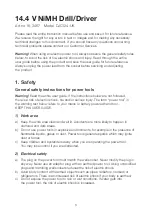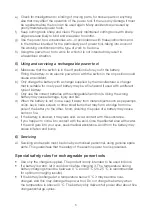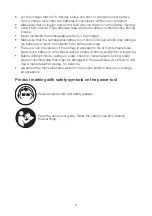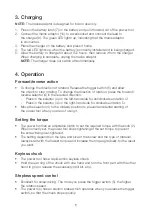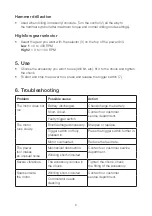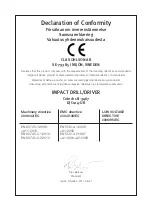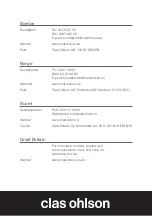
10
7. Disposal
• When the time comes to dispose of the product, do so in accordance with local
regulations. If you are not sure what to do, ask your local authority.
• To avoid short circuits, place adhesive tape across the battery contacts before
disposing of it.
• Faulty and exhausted batteries must be recycled.
• Do not throw exhausted batteries into a fire or into water.
8. Care and maintenance
• Keep the ventilation openings of the motor free from debris and dust.
• Clean the power tool regularly with washing-up liquid and a slightly damp cloth.
Never use powerful solvents.
• Charge the battery regularly. It will last longer if it is used.
9. Technical specifications
Model
DJC124-UK
Supply voltage
14.4 V
Rotation speed, stepless
0–400 RPM (low gear)
0–1100 RPM (high gear)
Adjustable torque
18 steps, drill mode and hammer drill
Impacts
0–5200 (low gear), 0–14300 (high gear)
(impacts per minute)
Max torque
16 Nm (low gear), 7 Nm (high gear)
Keyless chuck
0.8–10 mm
Drilling capacity
Ø 20 mm (wood), Ø 10 mm (steel), Ø 8 mm (concrete)
Weight
1.5 kg
Noise level Lpa
84.4 dB(A) K=3 dB(A)
Noise level Lwa
95.4 dB(A) K=3 dB(A)
Vibration
Impact drilling: 11.849 m/s² K=1.5 m/s² (no load)
Drilling: 2.800 m/s² K=1.5 m/s² (no load)
Battery
14.4 V/1.2 Ah (NiMH)
Mains adaptor
Primary 230 V, 50 Hz
Secondary 15 V, 400 mA
Charging time
3 to 5 hours



